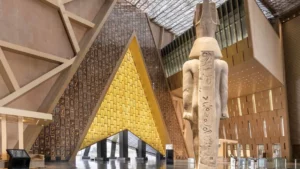Eritrean Forces Still Occupy Several Woredas and Kebeles in Tigray, Officials

They demand to ensure the sovereignty of the country in the north
Eritrean forces remain firmly rooted in several woredas and kebeles of Tigray, according to the newly formed Tigray Interim Administration (TIA). The new administration also disclosed that it could not fully take over administration of the region since a substantial part of it remains in the hands of Eritrean and informal forces originally from Amhara regional state.
When the Pretoria agreement was signed last November, ending the two-year war between the federal government and the Tigray Peoples Liberation Front (TPLF), Tigray was partitioned between four forces, which are the federal government, the TPLF, Amhara, and Eritrean forces.
This week, the federal government has handed over 20 woredas and city administrations under its control to the TIA. This means the federal government has stopped controlling the areas and transferred the administrative role to the TIA.
However, the TIA says it could not takeover the full administration over Tigray, as significant parts of Tigray remain under the occupation of Eritrean forces and informal forces based in Amhara regional state. According to the chief of the secretariat, out of the 93 woredas in Tigray, a significant number remain under the forceful occupation of the Eritrean forces and the informal forces of Fano.
“Irob, Gulomekeda, northern Tigray, and parts of northwestern Tigray remain in the hands of Eritrea. Six kebeles in the northern zone of Tigray are under the control of Eritrean forces. Tahtay Adiabo woreda, Badime and its area, Adi Tsetser, Gemhalo, Adimeti, and other kebeles in the northern part of Tigray are under the control of Eritrean forces,” Amanuel Assefa, chief cabinet secretariat of the TIA, told The Reporter.
Some of the areas remaining under Eritrean forces has been a source of dispute and strategic military areas claimed by the Eritrean government during the 1998 Ethio-Eritrean war.
The chief secretariat fears the current scenario eventually leads to another round of conflict between Ethiopia and Eritrea, if not peacefully resolved immediately.
“Those parts of Tigray were under the forceful occupation of foreign forces. By the way, Eritrean forces did not occupy Tigray’s land. They occupied Ethiopia’s land. This is disgraceful. We hope the federal government will discharge its mandate and ensure the sovereignty of the border,” he said.
On the other hand, Fano, an informally armed force based in the Amhara region, also controls more parts of Tigray, according to Amanuel. These include the entire western Tigray zone; nine woredas in of north-western Tigray zone; Raya, Korem, Alamata, and other areas of the southern Tigray zone; Tselemt and Asgede woredas; Maitsebri, Lailay Tselemti, and Tahtay Tselemti still remain under Amhara forces, Amanuel added.
In general, the entire western Tigray zone, two woredas in north-western Tigray, and parts of southern Tigray, including Raya, Korem, and Alamata, remain under the control of Fano, according to the official.
“The reason these forces forcefully controlled Tigray land is political. As per the Pretoria agreement, all land under the Tigray regional government before the war, must be returned to the TIA. The agreement states everything will be as per the constitution. A substantial number of Tigrayans are displaced from these areas and are currently living on the roads, without any shelter or IDP camp. There are multilayered problems in Tigray. People are still being killed, and raped, in the areas under occupation. Any property standing, is being looted and damaged,” said Amanuel.
Even though the international community, including the UN, US, and EU, have been pressing for the withdrawal of Eritrean forces from Tigray, the Ethiopian government did not officially recognize the presence of Eritrean forces in Tigray.
The building of trust between the TIA and federal government is making good progress, according to Amanuel, who says Tigray cannot be rebuilt while many of its parts are still under a control of an external force.
“The priority of the TIA is to re-establish the livelihood of Tigrians who are displaced and affected by the war. But we cannot do this unless the land where they are displaced is under the control of our administration.”
Source : The Reporter





